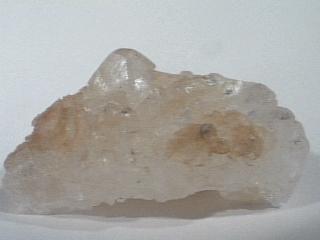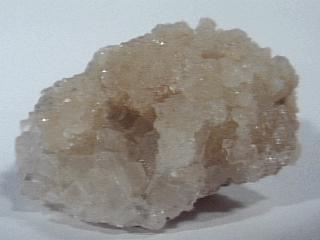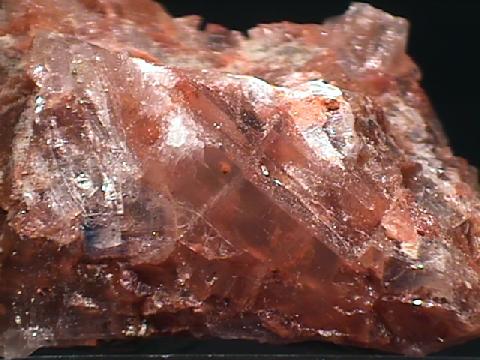 THE MINERAL SYLVITE
THE MINERAL SYLVITE
- Chemistry: KCl, Potassium Chloride
- Class: Halides
- Uses: As a major source of potash and as mineral specimens.
Specimens
Sylvite is closely related to the more common halite, NaCl, and they share so many properties that identification is sometimes difficult. Sylvite commonly has octahedral faces truncating the corners of the cubic crystals. So does halite, but this characteristic is much more prevalent in sylvite than in halite. Better tests include a taste test in which halite, salt, will taste salty and sylvite tastes bitter. This test is good if you need to distinguish one or two specimens, but what if you are testing hundreds of feet of core samples for beds of sylvite verses halite. A good test in those cases is the knife test in which a knife blade when scratched across the surface of the sample will produce a powder in halite and not in sylvite.
There is a low-sodium version of table salt (light salt) which is half halite and half sylvite. Naturally, it has half the sodium content of ordinary table salt, since that sodium has been replaced with potassium. It is a perfectly acceptable substitute for many people, while others consider it bitter.
The name sylvite is easily confused with the much more valuable sylvanite. Sylvanite is a silver gold telluride, AuAgTe4 and should never be mistaken for sylvite.
PHYSICAL CHARACTERISTICS:
- Color is colorless or white, sometimes tinted red, blue or yellow.
- Luster is vitreous.
- Transparency: Crystals are transparent to translucent.
- Crystal System is isometric; 4/m bar 3 2/m.
- Crystal Habits are cubes with frequent octahedral faces truncating the corners of the cube, crystals will often have a cavernous appearance from dissolution. More commonly massive and granular.
- Cleavage is good in three directions forming cubes.
- Fracture is uneven.
- Hardness is 2 - 2.5
- Specific Gravity is 1.99 (light, surprisingly slightly less dense than halite with a 2.17 specific gravity)
- Streak is white.
- Other Characteristics: Dissolves easily in water, does not powder when the blade of a knife is scratched across its surface and has a distinctive bitter taste.
- Associated Minerals include halite, carnallite, kieserite, gypsum, anhydrite and other evaporite minerals.
- Notable Occurrences include Strassfurt, Germany; Kalush, Russia; New Mexico, Texas and Kern Co., California, USA; Saskatchewan, Canada; France, Mt. Vesuvius, Italy and Spain.
- Best Field Indicators are bitter taste, associations and crystal habit.







